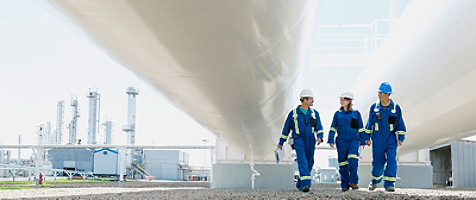What is oil and gas surveillance?
Oil and gas sites use a lot of expensive equipment that operates remotely, including undersea locations and pipelines spanning hundreds of miles over rugged terrain in remote locations and deep oceans. Oil and gas surveillance allows owners and operators to monitor these assets around the clock, often including automated alerts to warn of developing situations before they escalate.
What are the business benefits of oil and gas surveillance?
The latest oil and gas surveillance systems leverage digital technologies such as the cloud, remote sensors, drones and automated alerts to save time and money. By reducing travel and supervision costs, staff can be more productive.
Use cases and business benefits are numerous. Added security is a big benefit, often using cameras with night vision and motion detection to deter theft or vandalism. Similarly, surveillance systems can notify operators when people are on location and let them know what contractors are doing at any time. Safety is another consideration. Because surveillance systems can communicate with gauges on tanks, pumps and other equipment, potentially dangerous situations can be automatically detected and prevented without risk to human health.



















